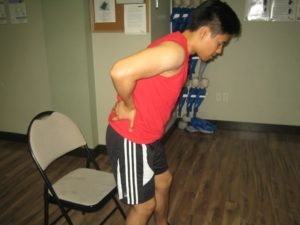Spondylosis involves wear-and-tear changes to the spine. Many individuals develop the condition in the spine as they grow older. The age-related variances in the spine vary from one individual to another and do not usually trigger any issues. Once spondylosis triggers symptoms, they usually include occasional pain and rigidity.
The changes can also manifest in other spinal segments including the lower back. An individual is likely to develop the condition as they age.
What are the causes?
The spine serves as a backbone that runs from the base of the head up to the tailbone. It provides the body structure and supports most of the weight. It also transmits and shields almost all the major nerve branches that stem from the brain.
The bones of the vertebrae are separated by rubber-like, soft tissues. These cartilage surfaces as well as discs in between the vertebrae allow proper movement and absorbs against any pressure on the bones.

As one gets older, the discs gradually age. Over time, they lose their cushioning capability because they become drier. As a result, the discs become thinner and harden. The body responds to spondylosis by initiating increased bone growth due to the direct contact of bones rubbing against one another. This can result to bony growths called as spurs.
Risk factors for spondylosis
The daily wear and tear on the bones and muscles over time is the usual cause of spondylosis. Other possible risk factors for the condition include the following:
- Overweight and obesity
- Previous spinal injuries or surgery
- Lack of exercise or sedentary lifestyle
Management
In most cases of spondylosis, treatment is not needed since only mild, occasional issues of pain and stiffness occur.
Measures to manage minimal discomfort due to spinal aging include the following:
- Pain medications such as NSAIDs
- Keeping the body physically active
Remember that exercise can loosen up rigid joints and strengthen other muscles that supports the aging spine. Rest is essential if the pain is too much to bear.
Surgical treatment
Surgery is the last option if other treatment options are ineffective. Surgical intervention is only an option in limited cases where the issue is severe due to the possibility for lasting pain.
